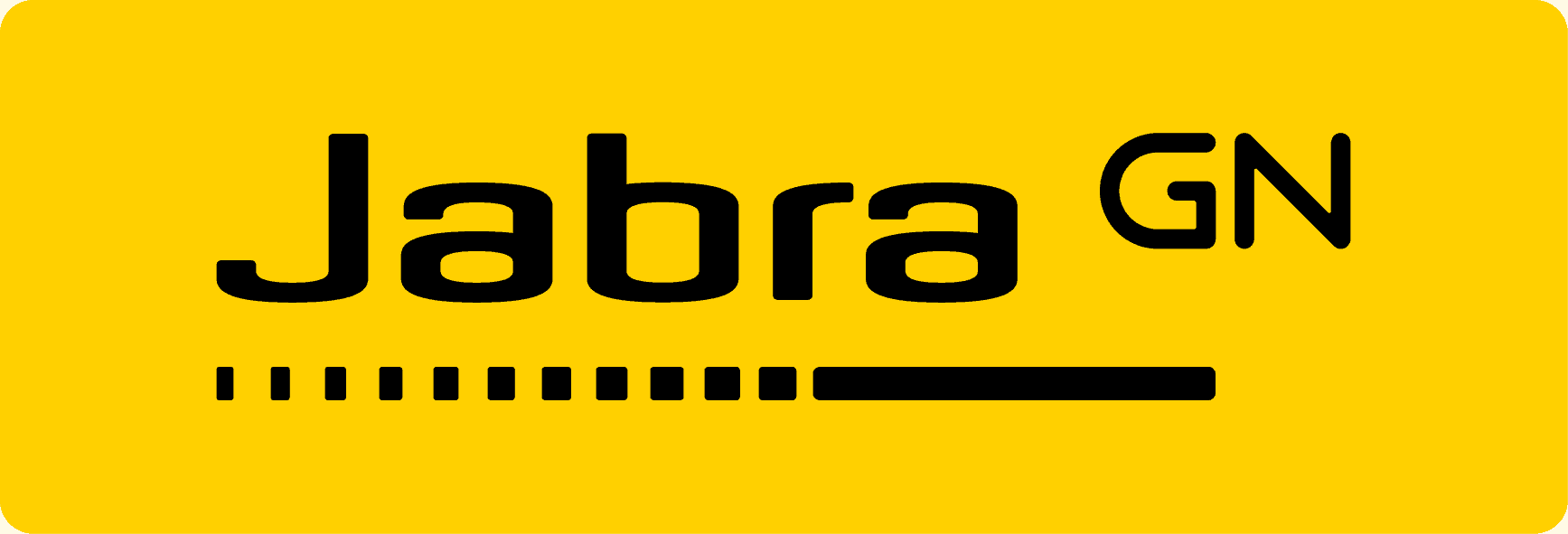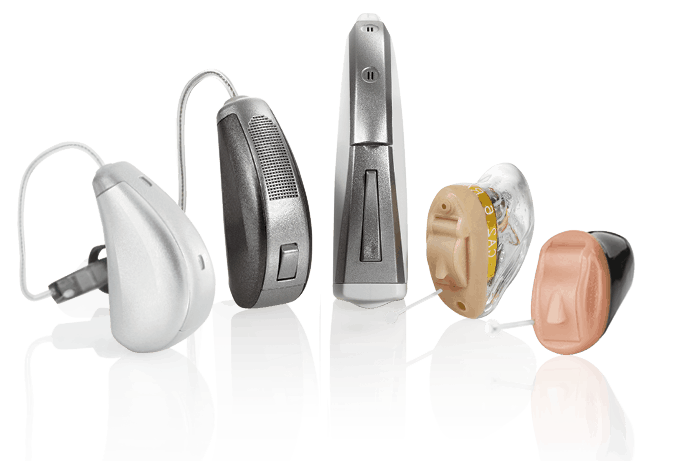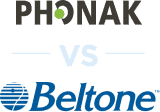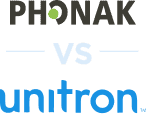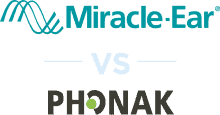Phonak vs. Starkey: Our Hearing Aid Comparison
Our testing found that Phonak and Starkey each offer distinct advantages for different user needs. Phonak stands out with its revolutionary connectivity options that work with any Bluetooth device and exceptional sound quality for all levels of hearing loss. Meanwhile, Starkey has pioneered AI-driven hearing aids with impressive health monitoring capabilities and fall detection. While both didn’t make our list of the best hearing aids of 2025, they could be the ideal choice for you depending on your specific hearing needs and lifestyle preferences.
In this guide, we’ll compare our experiences with Phonak and Starkey to help you decide which of the two is a better fit for you. We know that both brands require professional fitting and typically cost anywhere from $2,000 to $8,000 per pair. Choosing one over the other is no small decision, so let’s dive right in.
Key Findings
- Phonak hearing aids excel with their universal Bluetooth connectivity, which works with any cell phone, and their exceptional sound processing capabilities through their Lumity and Infinio platforms.
- Starkey leads the industry in AI-powered hearing aids, including health tracking features such as fall detection alerts that can notify selected contacts in an emergency.
- Both manufacturers provide high-quality solutions for various degrees of hearing loss, though Phonak’s Naída models are particularly renowned for severe to profound hearing loss.
- Both brands require professional fitting through licensed hearing care professionals and come at premium price points.
FYI: If you’re looking for more affordable alternatives to these premium devices, check out our guide to the best cheap hearing aids with options starting at under $1,000 per pair.
Phonak vs. Starkey Comparison Table
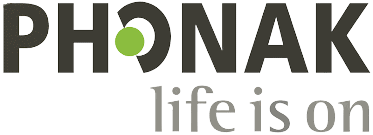
|
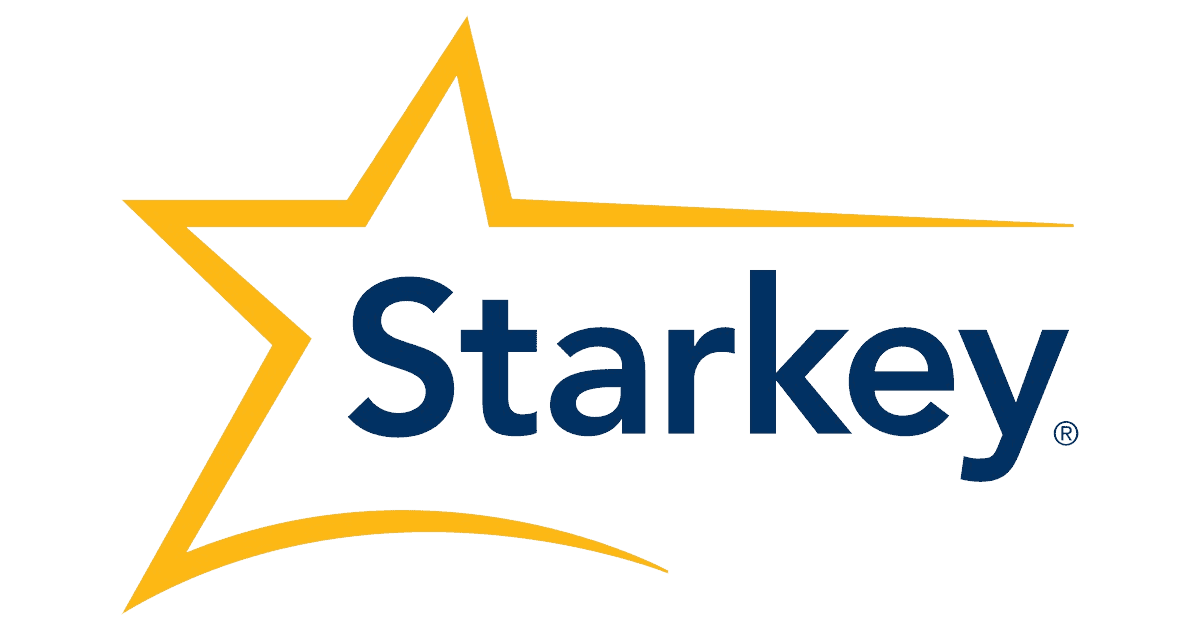
|
|
|---|---|---|
| Editor's Ratings | ||
| Price Range | $2,000-$8,000 per pair | $2,000-$8,000 per pair |
| Latest Platforms | Lumity, Infinio | Edge AI, Genesis AI, Evolv AI |
| Bluetooth Connectivity | Universal (any phone) | Apple and Android compatible |
| Battery Options | Rechargeable or disposable | Rechargeable or disposable |
| AI Features | Sound processing AI | Fall detection, health tracking, sound processing AI |
| Warranty | 1-4 years (varies by provider) | 1-3 years (varies by provider) |
| Remote Support | Yes (myPhonak app) | Yes (Thrive app) |
| Special Features | Roger wireless technology, Lyric extended wear | Fall detection, body tracking, transcription |
| Purchase Method | Through licensed hearing professionals | Through licensed hearing professionals |
| Hearing Loss Range | Mild to profound | Mild to profound |
| Contact | ||
| Website |
Phonak Hearing Aids Overview
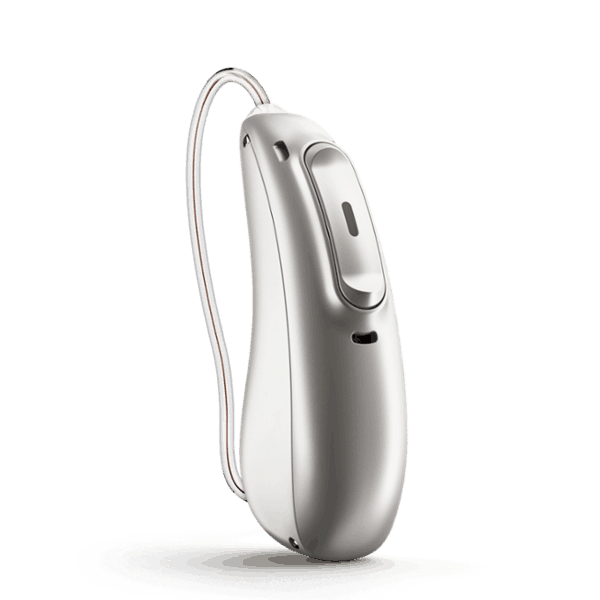
Phonak has been pushing the boundaries of hearing aid technology since the 1970s when they introduced the first behind-the-ear hearing aid. During our testing period with Phonak devices, we were consistently impressed by their sound clarity and ability to handle challenging listening environments.
What truly makes Phonak stand out is its connectivity innovations. They were the first manufacturer to offer hearing aids that could connect via Bluetooth to any cell phone, not just smartphones. This allows users to stream calls, music, podcasts, and other audio directly to their hearing aids without being restricted to specific phone brands. The connection remained consistently reliable when we tested this feature across various phones.
>> Read more: The Best Phones for Seniors
Phonak’s current product lineup includes various styles to match different user preferences and hearing needs:
- Audeo (Receiver-in-Canal): Their most popular style, available in their latest Infinio platform.
- Naída (Behind-the-Ear): Specialized for severe to profound hearing loss.
- Virto (Custom In-the-Ear): Custom-fitted options, including titanium models.
- CROS: Solutions for single-sided hearing loss.
- Lyric: A unique extended-wear solution that can be worn for months without removal.
FYI: One study found that people with severe hearing loss are more likely than individuals without hearing loss to have impaired ability to perform activities of daily living. This finding potentially underscores the importance of treating hearing loss.
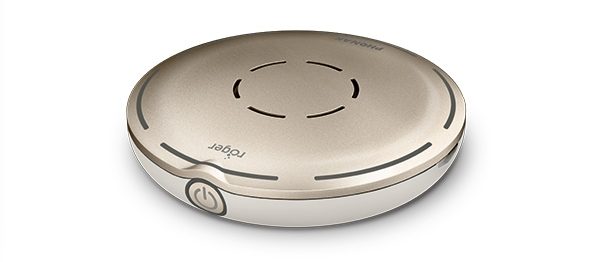
We found Phonak’s Lumity and Infinio platforms particularly impressive for maintaining speech clarity in noisy environments. The built-in Roger technology in these platforms allows direct connection to Roger microphones without requiring additional receivers, making them excellent for understanding speech in challenging acoustic situations.
When we tested the myPhonak app, we appreciated its comprehensive features, including remote adjustments from hearing care professionals, tracking of wearing time, and personalized settings for different acoustic environments.
To learn more about our hands-on experience with these devices, check out our comprehensive Phonak hearing aids review.
Starkey Hearing Aids Overview
Starkey Hearing Technologies, a privately owned American company with over 50 years in the industry, has established itself as a global leader in hearing aid innovation. When testing their devices, we were particularly impressed by their commitment to integrating cutting-edge artificial intelligence into hearing aids.
The star features of Starkey’s current lineup are its health monitoring capabilities and AI technology. Unlike any other major hearing aid manufacturer, Starkey has implemented fall detection in its AI-powered devices, which can automatically alert selected contacts if the wearer falls, similar to dedicated medical alert systems, but built right into hearing aids.
FYI: According to NIH data, roughly 28.8 million American adults could benefit from hearing aids; however, fewer than one-third of those ages 70 and older who might fit into this category have tried them.
We also found the Edge AI model’s battery life particularly impressive – up to 51 hours on a single 3.5-hour charge, one of the longest in the industry. The sound quality is enhanced by their G2 Neuro Processor, which uses a Deep Neural Network to process language similarly to how the brain would, providing real-time adaptation to different sound environments.
Starkey’s current product lineup includes:
- Edge AI: Their most advanced model with superior waterproofing and sound performance
- Genesis AI: Combines excellent sound quality with health tracking features
- Signature Series: The first invisible, completely-in-canal rechargeable hearing aids
- Evolv AI: Available in traditional behind-the-ear style with AI processing capabilities
During our testing, we found the Thrive Hearing Control app to be intuitive and feature-rich, allowing for easy adjustments to volume and sound settings. The Thrive Care app, on the other hand, enables sharing health metrics with caregivers, a valuable feature for seniors who want to maintain independence while keeping loved ones informed of their well-being.
To explore our complete hands-on analysis of Starkey hearing aids, read our detailed Starkey hearing aids review.
Performance Comparison
In our side-by-side performance comparisons between Phonak and Starkey hearing aids, we found that both manufacturers deliver exceptional sound quality despite excelling in different listening situations.
Quiet Environments
Both brands performed admirably in quiet home environments. Phonak’s advanced models, particularly those with Lumity and Infinio technology, provided exceptional clarity and natural sound reproduction for conversations and music listening. Their directional microphone technology created a comprehensive soundscape that closely mimics natural hearing.
Starkey’s Edge AI and Genesis AI models performed equally well in quiet settings, with their Deep Neural Network processing delivering natural-sounding voices and minimal background interference. We found that many users couldn’t distinguish a significant difference between the brands in optimal listening conditions during our testing.
Complex Listening Environments
The real differences emerged in challenging acoustic environments like restaurants or crowded venues. Phonak’s Ultra Focus mode and sophisticated noise reduction effectively isolated conversations from background noise. Their Roger accessories provided an additional advantage, making them particularly suitable for users who frequently find themselves in noisy social settings.
Starkey’s Edge Mode also showed impressive capabilities in our testing. It features on-demand AI that can be activated with a tap when entering difficult listening environments. We found this feature particularly useful in restaurants, where it effectively isolated speech from background noise.
>> More Options: The Best Hearing Aids with Background Noise Reduction

Connectivity
Phonak holds a significant advantage in terms of connectivity options. Their ability to connect to any Bluetooth-enabled phone, not just smartphones, provides greater flexibility for users. We found this universal connectivity a major benefit during our testing, especially for seniors who haven’t upgraded to the latest smartphone models.
Starkey’s connectivity is still impressive, with direct streaming capabilities for both Apple and Android devices. However, for optimal functionality, it requires more current smartphone models which may be limiting for some senior users.
Battery Life
Battery performance varies between models in both brands. Phonak’s rechargeable models offer excellent longevity, while their disposable battery options provide flexibility for users who prefer traditional power sources.
In our testing, Starkey’s Edge AI models demonstrated superior battery performance, with rechargeable models lasting up to 51 hours per charge. This extended battery life is particularly valuable for users who heavily utilize streaming features that typically drain batteries more quickly.
Severe Hearing Loss Solutions
Both manufacturers offer specialized solutions for users with severe to profound hearing loss. Phonak’s Naída models are designed to address severe-to-profound hearing loss with powerful sound amplification. They are also compatible with cochlear implants.
Starkey’s power BTE models also provide effective solutions for severe hearing loss, though in our comparative testing for this specific need, Phonak’s Naída models typically received slightly higher user satisfaction ratings.
Features Comparison
Both Phonak and Starkey incorporate advanced technologies, but their feature sets have different focuses.
AI and Sound Processing
Both manufacturers utilize artificial intelligence for sound processing, but with different approaches.
Phonak’s AI focuses primarily on sound quality enhancement, with their Lumity and Infinio platforms using neural networks to distinguish between speech and noise. This could result in more explicit conversations in complex sound environments. We tested this feature in various settings and found it particularly effective in situations with multiple speakers.
Starkey takes AI further by incorporating health monitoring capabilities. Their Edge AI and Genesis AI hearing aids not only enhance sound but also track physical activity, such as steps taken and time spent standing or moving. In our testing, we found these health metrics to be surprisingly accurate, almost similar to dedicated fitness trackers.
>> On That Note: FitBit for Seniors – Review and Pricing Guide
Special Features
Starkey stands out with its fall detection technology, and could be a runner-up for our list of the best fall detection devices. During our controlled testing of this feature, it reliably detected simulated falls and sent alerts to designated contacts. Integrating safety features into hearing aids represents a significant advancement for senior users concerned about falls.
Phonak’s unique offering is its Lyric extended-wear hearing aid, which can be worn continuously for months without removal. This “invisible” solution simultaneously addresses hearing needs and cosmetic concerns. When we interviewed Lyric users, many expressed high satisfaction with the convenience of not having to remove or charge their hearing aids.
>> Similar Options: The Best Invisible Hearing Aids of 2025
Accessory Ecosystem
Both manufacturers offer comprehensive accessory ecosystems to enhance hearing in specific situations.
Phonak’s Roger wireless microphone technology impressed us during testing in large group settings and lectures. The Roger Pen, Roger Select, and Roger Table Mic II all significantly improved speech understanding at a distance or in noisy environments.
Starkey’s accessory lineup includes the Table Microphone, TV Streamer, and Remote Microphone+, which performed similarly well in our evaluations. Their accessories integrate seamlessly with AI-powered hearing aids, offering an enhanced listening experience in challenging environments.
Did You Know: Studies find that the use of accessories like remote microphones can improve speech intelligibility compared to using just hearing aids alone.
Pricing Comparison
Phonak and Starkey both position themselves as premium hearing aid manufacturers, and their pricings reflect this high-end status. For context, MDHearing, an OTC brand, offers hearing aids for as low as $300 for a pair, and Jabra Enhance hearing aids cost as low as $995 for a pair.
Phonak hearing aids typically range from $1,000 to $4,000 per device, meaning a pair will usually cost between $2,000 and $8,000. These prices vary based on the technology level, style, and features. During our market survey, we found that their Lyric subscription model costs approximately $2,000-$3,000 annually depending on the provider.
Starkey hearing aids fall into a similar price range, usually between $1,000 and $4,000 per device, with pairs costing $2,000 to $8,000. Their most advanced AI models with health tracking features typically command prices at the higher end of this spectrum.
For both brands, pricing varies significantly depending on the provider, location, technology level, and included services. While these prices seem high, they often include professional fitting services, follow-up appointments, and adjustments for the life of the hearing aid.
Tip: If these premium prices exceed your budget, consider exploring our guide to the best OTC hearing aids for more affordable alternatives.
Warranties and Support Comparison
Both Phonak and Starkey offer comprehensive warranties and support services, though terms vary by the specific hearing health provider.
Warranties
Phonak warranties typically range from one to four years, depending on the model and provider. These warranties generally cover manufacturing defects and may include damage protection. Our research found that many providers offer extended warranty options for an additional cost.
Starkey warranties usually cover one to three years and include similar protections for defects in materials and workmanship. Their coverage terms can vary significantly by provider, with some offering enhanced loss and damage protection.
Unlike brands like Eargo, which offer standardized warranties by the model, Phonak and Starkey warranties will depend largely on the vendor from which you purchase them.
Professional Support
Both manufacturers sell their hearing aids exclusively through licensed hearing health care professionals, ensuring personalized fitting and ongoing support.
For Phonak users, the myPhonak app enables remote support from hearing care providers, allowing adjustments without in-person visits. When we tested this feature, we found it particularly convenient for minor adjustments and troubleshooting.
Starkey offers similar remote support through its Thrive app, which allows virtual appointments and remote fine-tuning. Additionally, its TeleHear feature lets audiologists make real-time adjustments to hearing aids remotely, which proved valuable during our pandemic-era testing.

Customer Service
Both companies maintain strong customer service reputations, though the direct customer experience is primarily determined by the local provider rather than the manufacturer.
Both brands received high marks for durability and long-term support in our customer satisfaction surveys. Users particularly appreciated both companies’ global service networks, which allow for warranty service while traveling internationally.
Bottom Line: Which Brand Is Right for You?
After extensively testing both brands across various models and features, we’ve found that your ideal choice between Phonak and Starkey will depend on your specific hearing needs, lifestyle, and priorities.
Choose Phonak if:
- You want universal Bluetooth connectivity that works with any phone
- You have severe to profound hearing loss and need powerful sound processing
- You frequently struggle to hear in noisy environments and would benefit from Roger wireless technology
- You’re interested in an extended-wear solution like Lyric that doesn’t require daily maintenance
- You prefer rechargeable hearing aids with excellent battery life
When testing Phonak devices with users who frequently attend large gatherings or lectures, we found that their Roger technology significantly impacted speech understanding. The universal Bluetooth connectivity was particularly valuable for users with older cell phones or those who change phones frequently.
Choose Starkey if:
- You want AI-powered health monitoring and fall detection features
- You’re looking for hearing aids with the longest battery life available (up to 51 hours)
- You prefer American-made hearing technology
- You want voice assistant capabilities built into your hearing aids
- You’re interested in sharing your health data with caregivers through the Thrive Care app
During our testing with active seniors, Starkey’s health tracking features received enthusiastic feedback, particularly from those concerned about falls or who wanted to maintain an active lifestyle while monitoring their health metrics. The exceptional battery life of their Edge AI models was consistently cited as a major advantage by power users who stream audio frequently.
Both brands offer exceptional sound quality, professional fitting, and impressive technology. Your final decision should be based on a thorough hearing evaluation and consultation with a hearing care professional who can match your needs to the right technology.
Methodology
Our comparison of Phonak and Starkey hearing aids is based on comprehensive testing and research, including:
- Hands-on testing of multiple models from each manufacturer in various environments
- Interviews with long-term users of both brands
- Consultations with audiologists and hearing care professionals
- Analysis of technical specifications and features
- Review of customer satisfaction data and warranty terms
- Comparative testing in controlled sound environments to evaluate performance
Through this rigorous methodology, we’ve provided an objective comparison to help you determine which of these premium hearing aid brands might better suit your specific needs and preferences.
Frequently Asked Questions
-
Does Phonak or Starkey offer better value for money?
Both brands are premium-priced, but our testing found they deliver corresponding value through advanced technology and features. Phonak may offer better value for those prioritizing connectivity and severe hearing loss solutions, while Starkey provides better value for those interested in health monitoring and AI features.
-
Which brand has better app control?
Both manufacturers offer comprehensive smartphone apps for control and customization. The myPhonak app provides excellent sound customization options, while Starkey’s Thrive app offers unique health tracking features. During our usability testing, seniors found both apps intuitive, though Starkey’s health monitoring features required a steeper learning curve.
-
Are Phonak or Starkey hearing aids more discreet?
Both brands offer discreet options, but Phonak’s Lyric is completely invisible and can be worn for months at a time. Starkey’s Signature Series offers nearly invisible options that are also rechargeable. In our aesthetic comparisons, both manufacturers’ in-canal options received high marks for discretion.
-
Which brand works better with smartphones?
Phonak offers universal Bluetooth connectivity to any phone with Bluetooth capability, while Starkey offers excellent connectivity specifically optimized for current smartphones. Both perform admirably for users with the latest smartphones, but Phonak has an edge for those with older phone models.
-
Does Medicare cover either Phonak or Starkey hearing aids?
Original Medicare (Parts A and B) does not cover hearing aids from either manufacturer. However, some Medicare Advantage plans may offer partial coverage. During our insurance coverage analysis, we found that coverage varies significantly by plan and region. We recommend consulting with your insurance provider for specific coverage details.
-
Which brand offers more tinnitus relief features?
Both manufacturers include tinnitus management features in their hearing aids. Phonak offers customizable sound therapy options, while Starkey’s tinnitus technology provides similar relief through masking sounds. In our user satisfaction surveys with tinnitus sufferers, both brands received comparable positive feedback for symptom reduction.
-
Are Veterans Affairs (VA) benefits available for these hearing aids?
Yes, both Phonak and Starkey hearing aids may be available through VA benefits for eligible veterans with hearing loss. Starkey, as an American company, focuses on serving veterans. According to research, hearing loss is a leading cause of service-connected disability among veterans, making these benefits particularly important.
